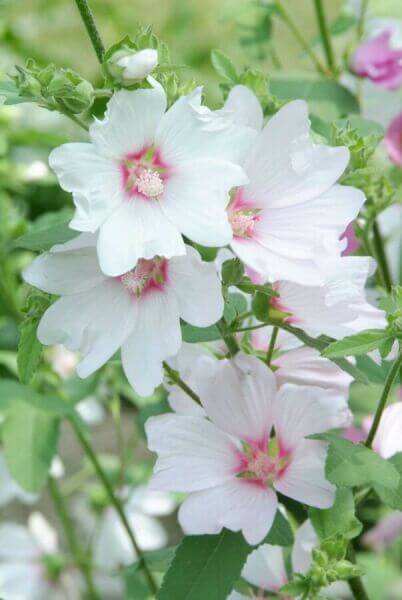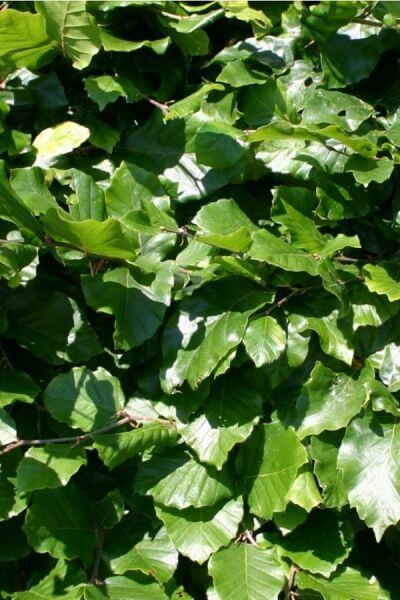Hedge Plants For Partitioning Gardens
Hedge Plants For Partitioning Gardens
Blog Article
Hedge Plants For All-season Interest
Boost your garden's attraction with rich hedge ranges such as Yew (Taxus), Thuja, Laurel, Photinia, and Bamboo, commemorated for their structural integrity and ecological benefits.
Yew and Thuja offer evergreen coverage and winter resilience, while Laurel offers quick development and broad, fragrant leaves.
Photinia adds seasonal charm with its lively red foliage, and Bamboo provides a low-maintenance, peaceful ambiance.
These hedges improve air quality, reduce sound, and produce tranquil, private spaces.
Correct planting, spacing, and maintenance ensure energetic development and ecological consistency.
Check out how these lush varieties can raise your garden's charm and well-being.
Key Takeaways
Change Your Garden With Lush Hedge Varieties
- Select Yew for its dense, evergreen development and exceptional longevity.
- Go with Laurel for its quick growth and broad leaves, making sure quick privacy.
- Select Photinia for its dynamic seasonal foliage, which turns a striking dark red.
- Utilize Bamboo for a low-maintenance, winter-hardy hedge with visual appeal.
- Space plants 2-3 per meter and prune frequently for optimal development and health.
Popular Hedge Plants
When transforming a garden with lush hedge varieties, it's vital to think about popular hedge plants such as Yew, Thuja, Laurel, and Photinia due to their unique attributes and benefits.
Yew (Taxus) is highly esteemed for its durability and thick, green growth, making it a prime option for enduring landscapes.
Thuja is kept in mind for its evergreen foliage and robust winter resilience.
Photinia includes seasonal vibrancy with red leaves that darken gradually, creating vibrant visual appeal.
Laurel offers fast development and fragrant, broad leaves, perfect for quick personal privacy.
Additionally, Bamboo is an exceptional choice for ambiance, providing a low-maintenance, winter-hardy option that enhances the garden's visual with its classy, swaying canes.
These choices deal with a variety of horticultural requirements and choices.
Benefits of Garden Hedges
Garden hedges offer a plethora of benefits, making them a valuable addition to any landscape. These natural barriers are economical to carry out and supply significant wind protection, improving air flow and adding to sound decrease. The thick foliage of hedges like Thuja and Beech ensures privacy by obstructing exposure, producing a peaceful and remote environment.
Hedges likewise play a crucial role in microclimate regulation, providing a stable environment that fosters plant growth and minimizes temperature fluctuations. Their intricate leaf structures filter pollutants, improving air quality and contributing to a much healthier garden environment.
Additionally, hedges master sound reduction, taking in and deflecting sound waves to lower ambient noise levels. This dual functionality of supplying both visual and acoustic personal privacy improves the overall serenity and visual appeal of any garden.
Planting and Maintenance Tips
For a successful hedge, precise preparation of the planting location is essential. Guarantee the soil has correct pH and drain to support strong root development.
Space the plants properly for the picked types. Water the hedge regularly during its initial growth phase, adjusting as needed with seasonal changes.
Implement a systematic pest control and disease prevention technique, using organic or chemical treatments when required. Routinely inspect for aphids, mites, and fungal infections.
Apply mulch to retain moisture and reduce weeds. Seasonal pruning promotes thick development and air flow, important for plant health.
Following these guidelines will assist you cultivate a lively, properly maintained hedge that improves the charm of your garden.
Spacing and Trimming Standards
Spacing and Trimming Standards
Appropriate spacing and cutting are essential for cultivating healthy, aesthetically appealing hedges. Sufficient spacing makes sure each plant receives sufficient nutrients, light, and airflow.
Follow these guidelines for optimal hedge upkeep:
- Spacing: Position hedge plants 2-3 plants per meter to motivate robust growth.
- Pruning Techniques: Regular pruning is important for preserving desired hedge height and shape. Trim new development in summer season and cut down older wood throughout winter.
- Seasonal Care: Adjust trimming techniques and schedules according to seasonal requirements to ensure plant health.
- Hedge Height: Routinely monitor and trim to keep the wanted hedge height and accomplish uniform aesthetic appeals.
Adhering to these actions will guarantee your hedge flourishes, enhancing both the appeal and performance of your garden.
Picking the Right Hedge
Selecting the Right Hedge
Selecting the proper hedge involves evaluating aspects such as fully grown height, foliage density, and environmental strength. Effective hedge plant selection needs understanding each species' development qualities and site-specific adaptability.
For instance, Yew (Taxus) provides excellent durability and dense Additional info development, while Thuja is notable for its winter season durability. In addition, considering upkeep requirements is important; fast-growing types like Laurel or Privet demand routine trimming, whereas low-maintenance alternatives like Bamboo or Ivy might be preferable for those looking for very little upkeep.
Ecological factors such as soil type, light schedule, and moisture conditions must also direct the choice process. This cautious approach guarantees the picked hedges will flourish, supplying both aesthetic and practical benefits to the garden landscape.
Shipment and Planting Guidance
To guarantee your hedge plants grow, they should be provided by specialized carriers and planted promptly upon arrival.
Follow these vital actions for successful planting:
- Soil Preparation: Enrich the soil with natural matter to enhance drain and nutrient content.
- Planting Depth: Create a trench twice the width and equivalent to the depth of the root ball.
- Watering Strategies: Water thoroughly after planting, keeping the soil consistently moist but not filled.
- Mulching: Use a layer of mulch to maintain moisture and reduce weeds.
Consumer Assistance and Service
Given the essential role of timely support in horticultural pursuits, our consumer assistance group is available six days a week through telephone, email, and social media to offer expert guidance and quickly attend to any issues. Their commitment to fast reaction times guarantees client complete satisfaction by fixing inquiries associated with plant health, ideal planting techniques, and maintenance schedules.

Interaction Approach
-------------------
Within 24 hours
This comprehensive support system, strengthened by an outstanding 9.3/ 10 consumer ranking, highlights our dedication to enhancing the gardening experience for every client.
Frequently Asked Questions
For How Long Does It Consider Hedge Plants to Establish?
Hedge plants normally need one to 3 years to end up being completely established, with the precise duration varying by species and growing conditions.
Effective care during this critical period is essential for robust development. Constant watering, alert weed control, and proper fertilizer application are critical in promoting strong root development.
For example, fast-growing species like Laurel might develop faster, while slower-growing ranges such as Yew might take longer. Diligent maintenance speeds up the facility process, resulting in thick and healthy hedges.
What Are the very best Hedge Plants for Privacy?
The question of the very best hedge plants for personal privacy involves evaluating evergreen and deciduous alternatives.
Evergreen hedges like Thuja, Laurel, and Cypress supply year-round coverage, ensuring constant personal privacy.
In contrast, deciduous hedges such as Beech offer seasonal personal privacy, shedding leaves in chillier months.
Key upkeep suggestions for privacy hedges consist of regular cutting, fertilizing in spring, and appropriate spacing-- generally 2 to 3 plants per meter.
Additionally, constant watering and diligent weed removal are important for promoting healthy, thick development.
Can Hedge Plants Attract Wildlife to My Garden?
Yes, hedge plants can attract wildlife to your garden by offering important benefits like shelter, food, and nesting websites, thus boosting regional biodiversity. Yew, holly, and laurel are exceptional for drawing in birds, while ivy supports a range of insects.
Nevertheless, it is very important to keep in mind that there are some disadvantages, such as increased upkeep to manage bugs and regular maintenance. Thoroughly choosing and keeping hedge varieties can assist stabilize these benefits and downsides, eventually fostering a sustainable and lively ecosystem in your garden.
Exist Any Blooming Hedge Plants Available?
Yes, there are flowering hedge plants available that can improve the appeal of your garden.
For example, Elaeagnus, also referred to as Olive Willow, produces aromatic white flowers in the fall, adding a touch of elegance.
Photinia, another popular option, showcases lively red leaves that grow into a rich green, developing a vibrant visual impact throughout the seasons.
To guarantee these plants flourish, it's necessary to practice proper pruning techniques and seasonal upkeep, such as cutting new growth in the summer and cutting down in the winter season.
These measures will assist keep the health and aesthetic appeal of your flowering hedges.
How Do I Avoid Insects in My Hedge Plants?
To prevent bugs in hedge plants, utilize natural pest control techniques and preserve appropriate hedge care. Introduce useful bugs like ladybugs, which victimize damaging bugs, to produce a well balanced community.
Routinely examine your hedges for signs of infestation and quickly eliminate any afflicted parts to prevent the spread. Ensure the health of your hedges by applying well balanced fertilizers and supplying appropriate water.
Make use of mulching to keep soil moisture and proper spacing to reduce plant stress and promote robust development. These practices jointly help in reducing pest issues and keeping a healthy hedge.
Conclusion
In essence, picking the best hedge varieties such as Yew, Thuja, and Laurel can change any garden into a serene sanctuary. These plants provide year-round plant, improve visual appeal, and offer useful advantages like noise decrease and wind security.
Proper planting strategies, precise spacing, consistent watering, and seasonal cutting are crucial for optimal development.
Trustworthy delivery services and expert client support make sure a seamless experience from purchase to planting, making it easier than ever to elevate your outside space.
Garden hedges use a wide variety of benefits, making them an important addition to any landscape. These natural barriers are affordable to carry out and offer substantial wind security, boosting air flow and contributing to sound reduction. The thick foliage of hedges like Thuja and Beech ensures privacy by obstructing presence, creating a tranquil and secluded environment.

Pruning Methods: Regular pruning is necessary for keeping preferred hedge height and shape. Trim brand-new growth in summer and cut back older wood throughout winter.
Report this page